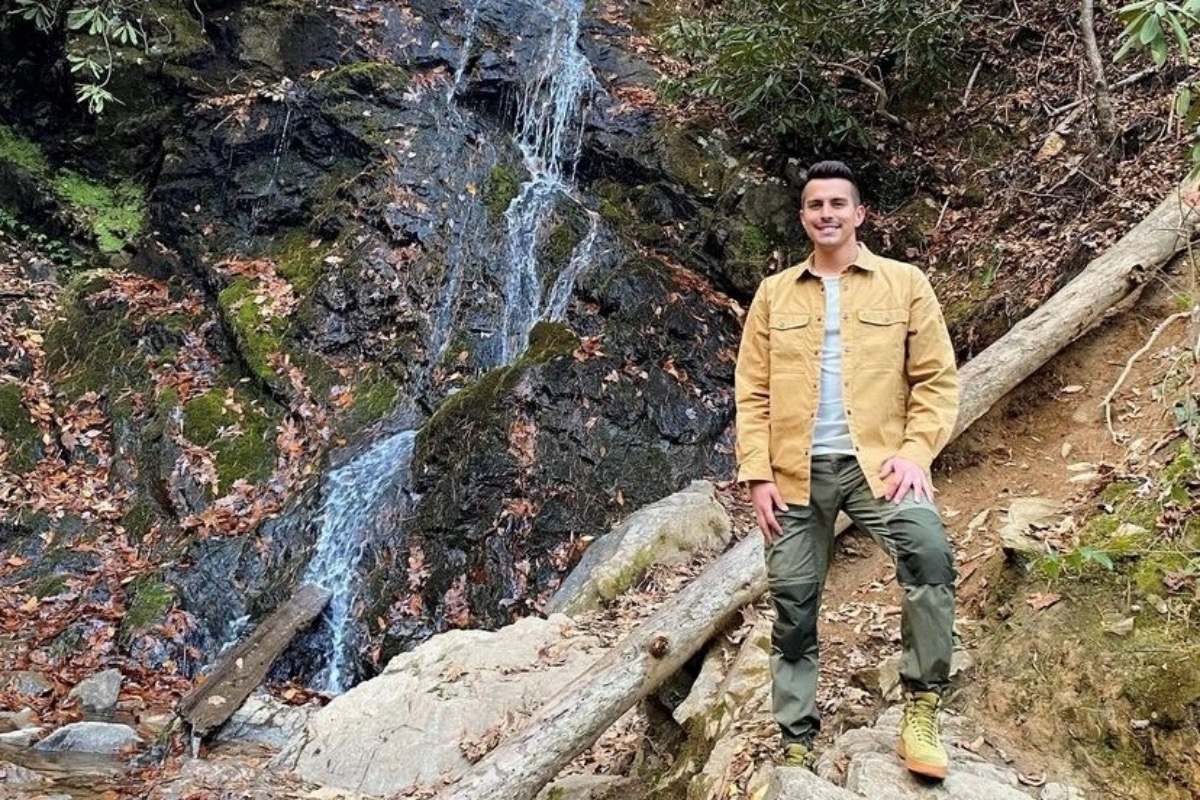

Forrest Cortes, director of community engagement for The Nature Conservancy (Courtesy of the Natural Resources Defense Council)
By GINA RAMIREZ and KYLER SUMTER
CHICAGO — Forrest Cortes is living up to his name.
Born and raised in the Belmont Cragin-Portage Park area, he describes himself as “Chicago through and through.” Growing up as a city kid didn’t diminish his love for nature, but cultivated it. It all started in his abuela’s backyard.
Today he’s the director of community engagement for The Nature Conservancy in Illinois, where his team works on connecting people to each other and nature. He’s also a co-founder of the group Out In Nature, where he hosts events like nature walks and rock climbing for those in the LGBTQIA+ community.
While the name Forrest may just be pure coincidence, it seems more like destiny.
For Latino Conservation Week, which runs July 16 to 24, the Natural Resources Defense Council sat down with Forrest to talk about how he got his start, the importance of letting communities lead the way, and why Latino Conservation Week and Latino representation in the conservation movement are critical.
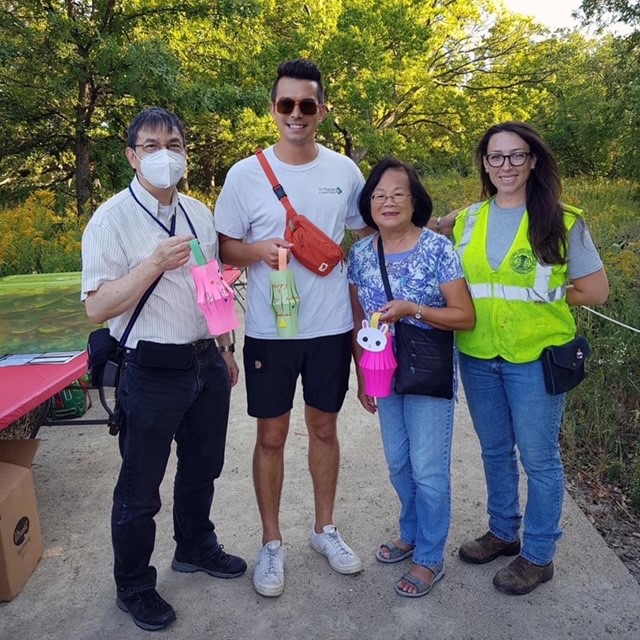

Forrest Cortes with community members at the Mid-Autumn Festival at the Burnham Wildlife Corridor in Chicago, Illinois. (Courtesy of the Natural Resources Defense Council)
Did your parents name you Forrest because of their love of conservation, or was it just a coincidence?
First and foremost, I think it’s important to say that I was born before Forrest Gump came out, so I had the name first. My parents found the name in a name book. I guess they had some good psychic abilities. The only more appropriate name would have been “Prairie.”
What drew you to conservation?
I was always excited about nature. I had grandparents on both sides who I was fortunate to grow up with taking me out in the garden. My abuela on my dad’s side had a beautiful garden with peaches, tomatoes, and cantaloupes in Brighton Park. On my mom’s side, we lived in an apartment above my great-grandma, and she had this wild, brambly raspberry patch in the yard.
I grew up with nature very close to home. You don’t think of Chicago as a place that is home to nature, but many of us who live here know we’ve got incredible parks, gardens, and blocks full of trees in some parts of the city. I had parents who nurtured me and inspired me to stay connected to nature, to volunteer, to do internships in high school and in college.
After I graduated from high school, I went to Auburn University in Alabama for a degree in wildlife ecology and management. I thought I wanted to be a researcher. I was excited to live in the forest and just study animals. But throughout college I realized I missed the city, and I missed our nature that we have here. I missed connecting with people.
I still appreciate the research side of things. I just know it’s not for me. Community engagement has become my area of passion. My area of expertise is around relationship building, working with communities, and uplifting the work communities have been doing for a long time to nurture their environment and their health. I wanted to work with people in nature, in the place where I grew up because it’s a place that’s very dear to me. That’s what brought me back home.
You’ve previously talked about how a lot of your knowledge on nature comes from the time you’ve spent listening to the wisdom found in communities. Can you expand on that idea?
We often think expertise about the environment comes from a textbook or from someone with a degree in a specific area. But I’ve learned more from building time into my workday to spend time with residents, community leaders, and partner organizations. Maybe their primary focus isn’t the environment, but they have important perspectives and lived experiences related to the outdoors.
Even in my work plan, when we’re developing a program or a partnership, I like to build in that time to just get to know people, listen to their stories, and share about my story.
While it’s not always published data, it’s important information that we need if we’re going to be equitable and if we’re going to build things that last and that impact people in the right ways.
You and Gina Ramirez know each other well from the time you’ve both spent on environmental community work. Gina is more focused on environmental justice while you focus on conservation. Can you talk about that relationship?
I appreciate so much in our relationship because I’m learning how to appreciate the natural areas in your own backyard. I’m learning about why these natural layers are connected to environmental justice. There’s an exchange that happens when we spend time together because we’re both looking to have healthier, safer communities, more green space, better air, and better water. But we come at it from slightly different angles.
We spend a lot of time at The Nature Conservancy talking about the benefits of a marsh for birds or for certain plants. But we don’t always talk about the benefits it provides to communities in terms of cleaning our air and serving as a place of respite and escape from stress and the business of life.
When we work together, we’re able to have more of those conversations about how this is all part of the same system.
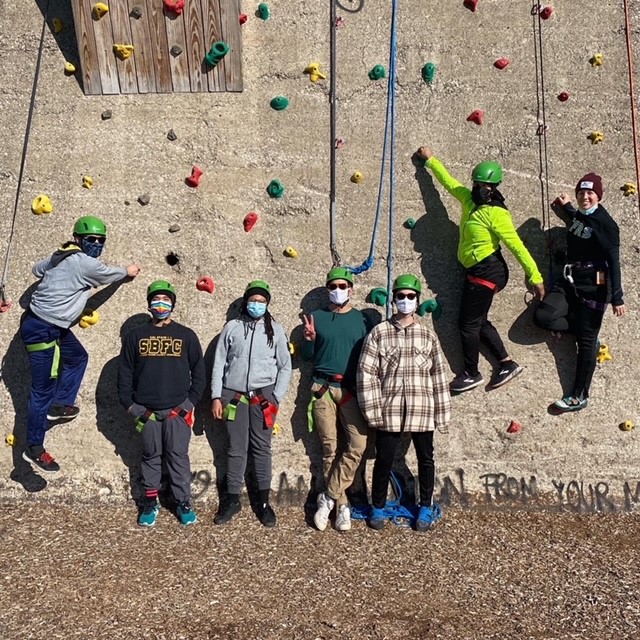

Out In Nature rock climbing event at Steelworkers Park in Chicago, Illinois (Courtesy of the Natural Resources Defense Council)
Tell us more about your group Out In Nature and why you founded it.
My fiancé and I co-founded Out In Nature in 2019. It started with us thinking about how we both have connections to nature. We were like, ‘We go to a lot of events, and we don’t necessarily know if there are a ton of queer people at events because it’s not something that’s very talked about.’
The silencing of LGBTQIA+ people occurs in the damping down of the ways we express ourselves, our pride, and our communities in larger spaces that are not designed with us in mind. We started to host events and drum up support in our friend groups. The first events were small and exciting to get anyone to show up. Since then, we’ve had dozens of events, from picnicking to bird watching. We’ve gone rock climbing at Steelworkers Park and we’ve got a yoga and meditation event planned for later this summer.
We have people from all over the gender identity and sexuality spectrums who come to this from different lived experiences of having positive and negative experiences in the outdoors. They’re helping us create events that are welcoming, inclusive for our communities and all the identities that we bring with us, because we are LGBTQIA+ people. But we’re also Latino. We’re also Latina. We’re also Black. We’re also people with differing abilities.
We went to Indiana Dunes and most of the people who came had never been. A couple of people even said they wouldn’t have come here because they don’t feel safe on these trails by themselves. And almost all of us have had [negative experiences]. I’ve had negative experiences on the trails in Alabama in Chicago recently.
At our events, people know that they can show up as their true selves. They can hold their partner’s hand. They can talk about the tough memories that they have in nature, but also the positive memories that they have in nature.
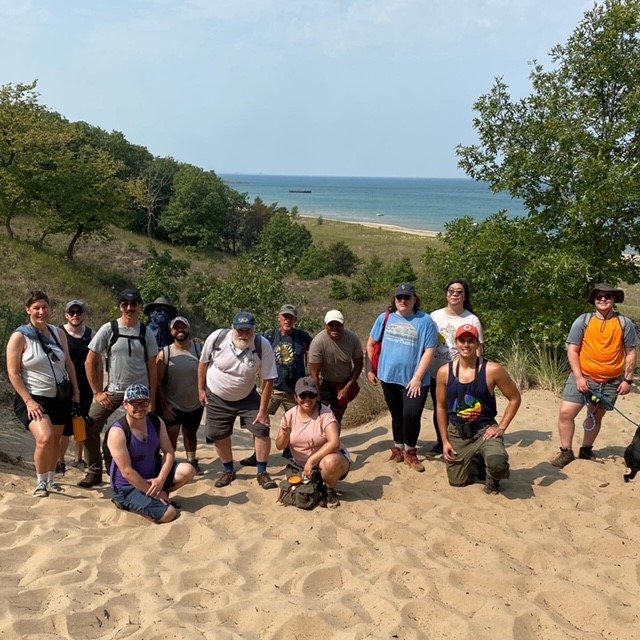

Out In Nature gathering at Indiana Dunes National Park in Porter, Indiana (Courtesy of the Natural Resources Defense Council)
Chicago provides easy access to neighborhood parks. Which one is your favorite?
If I put this in writing, I’m going to have people coming for me. I love Rainbow Beach Dunes in South Shore. It’s so peaceful and tucked away and in a very busy part of the city. It’s like the flip view of downtown. Everyone looks at Downtown from the Montrose, North Side angle. But when you see it from the other angle, it’s twice as beautiful.
Palmisano Park is another one because it has such a cool story. It used to be a quarry, a landfill. Now it’s a public park in Bridgeport.
In the spring I love going to Hegewisch Marsh and Indian Ridge Marsh. I’m out there by myself sometimes, just wandering around, losing track of time because I really like the natural areas on the Southeast Side. You can get lost in them. You can escape.
Tell us more about your role at the conservancy.
I oversee a team of four staff members who work on connecting people to people and people to nature, as Deborah Williams would say, who’s one of our staff members.
We shy away from template projects, models that we take from community to community. Instead, we lead with listening and relationship building to develop programs that can benefit people and the natural areas in the city. We have volunteer programs that help residents take ownership of natural areas in the city and help to care for them.
We also have youth career training programs, like the Imani Village Partnership, where we train young people in community health and urban forestry skill sets to try to help them understand how the social determinants of health impact our well-being, our communities and how we can design programs and work with communities to address those social determinants of health. They’re out there working at a food pharmacy, they’re planting trees. They’re building relationships with neighbors in the Roseland West Pullman, Chatham communities.
We don’t want to own this work. We want to work with partners and community leaders who own it and support the efforts that others have going on that we know are important to advancing equity and environmental justice and conservation in the city.
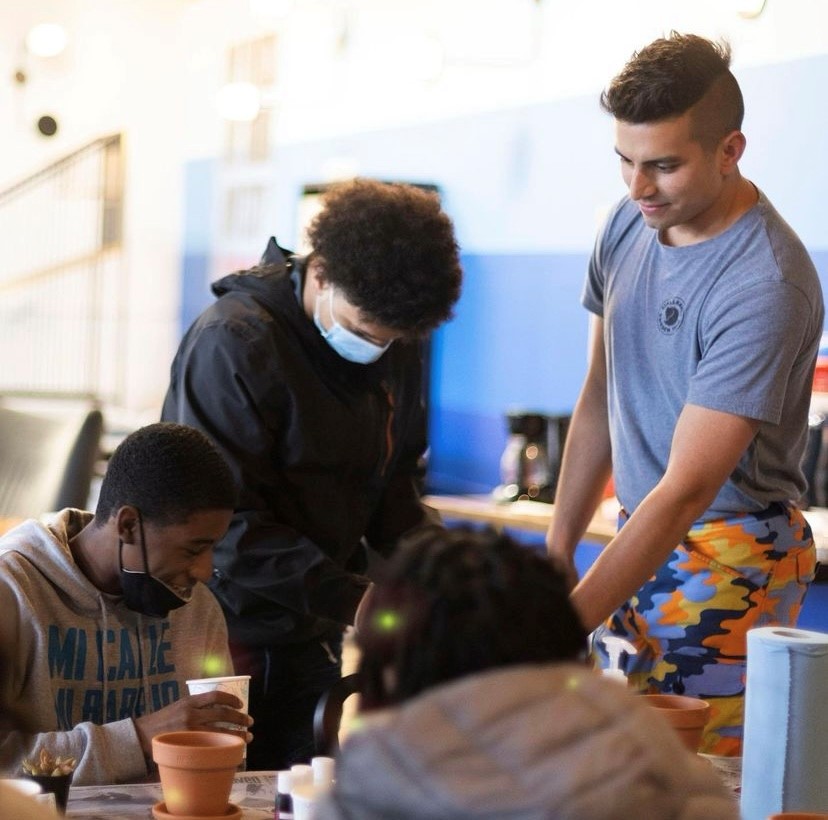

Forrest helping youth part of the My Block, My Hood, My City Explorers Program in Chicago, Illinois (Courtesy of the Natural Resources Defense Council)
How do you feel about diversity within the American conservationist movement, and do you feel like the movement is heading in the right direction?
There’s this perception that because the mainstream conservation environmental movements haven’t always recognized communities of color that we are disconnected, but I would say our communities are not disconnected. My dad has never thrown away a plastic bag. He recycles everything. People from all parts of my family have gardened or have different relationships with nature. Our communities of color are very connected to nature, in many diverse ways.
The work that is ahead is for the conservation and environmental funders and organizations is to continue to grow their recognition and understanding of those relationships and their understanding of that history, and to repair some of the harms that have been done by the intentional and unintentional exclusion of our communities from the conversation. When I visit the parks in Chicago, I see diversity, but there isn’t always diversity in leadership at the organizations working in parks. There isn’t always diversity in the funders that approach us to help support our work.
What does Latino Conservation Week mean to you?
Latino Conservation Week is something I have been inspired by. Going through undergrad in a predominantly white, cisgendered atmosphere could feel alienating at times. These weeks, like Black Birders Week and Latino Conservation Week, that elevate the lived experience and expertise of our communities are important.
And I think back to when I was in school, and I didn’t see many people of color in positions of power in conservation. I didn’t have many professors or teaching assistants or classmates who looked like me or who spoke more languages than just English. I know that’s changing. But I think that these weeks where we take a moment nationally to pause and to honor this diversity that already exists and is growing in our movements is important. It’s just super exciting and a little bit humbling to be a part of that.
***
Gina Ramirez is a Midwest outreach manager at the Natural Resources Defense Council and board president of the Southeast Environmental Task Force, a nonprofit organization dedicated to serving the southeast side and south suburbs of Chicago by promoting environmental education, pollution prevention, and sustainable development. Twitter: @GinaRamirez311
Kyler Sumter is a media assistant at the Natural Resources Defense Council. Twitter: @kysum_



[…] source […]